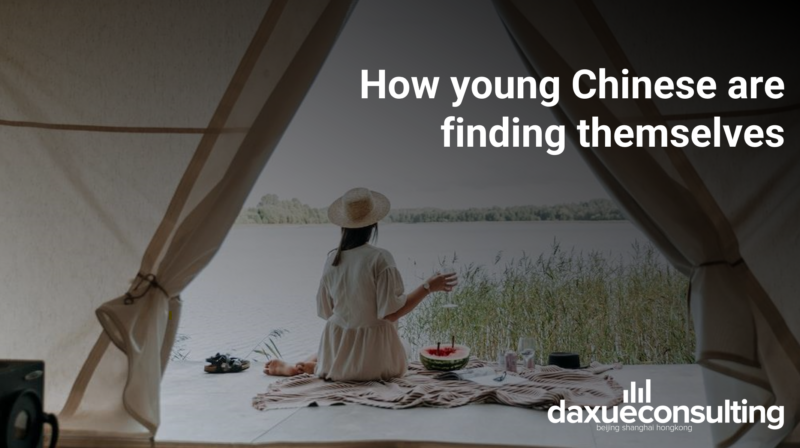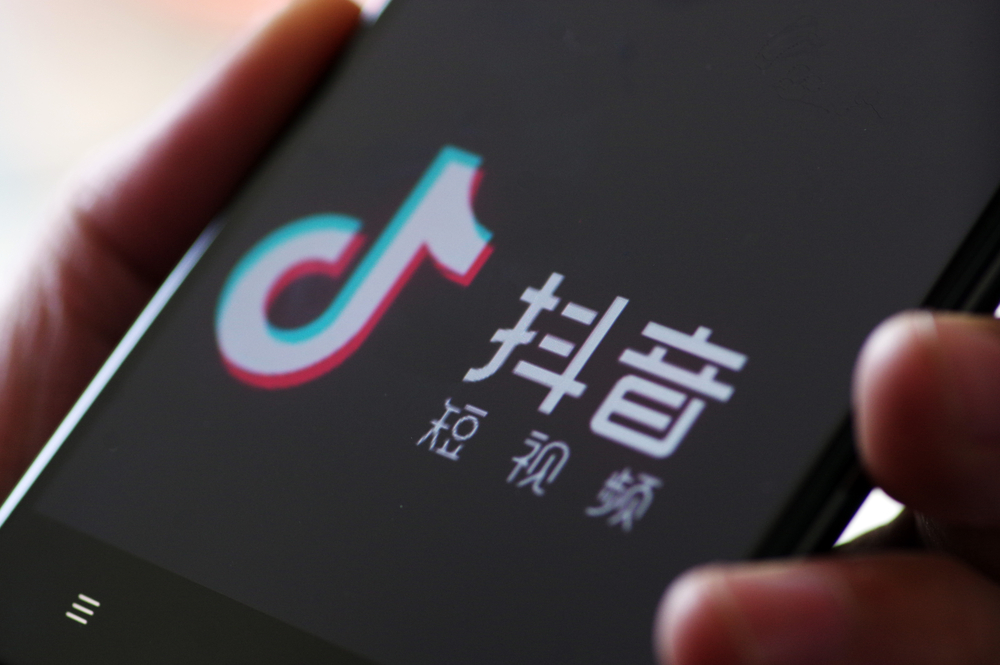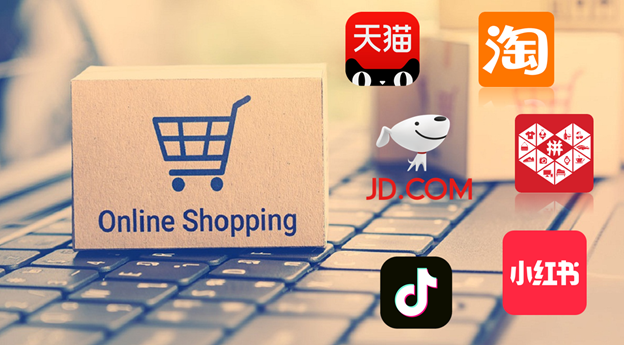China’s short video industry has become a battleground for some of the country’s biggest tech giants, including Tencent, Baidu, and Kuaishou. Among them, ByteDance’s application, Douyin (抖音), emerged as a key player. The company launched Douyin (known as TikTok outside China) in September 2016, and in just six years, the platform has attracted an astonishing 680 million Daily Active Users (DAUs) as of August 2022. This phenomenal growth highlights the immense potential of Douyin as a powerful marketing tool.
Understanding Douyin’s marketing power
Douyin is the second-largest social media platform and the number one short-video platform in the world. It is projected that by 2025, Douyin will achieve 835 million users. As of November 2022, 54% of its users in China are male and one in every three are under the age of 26.
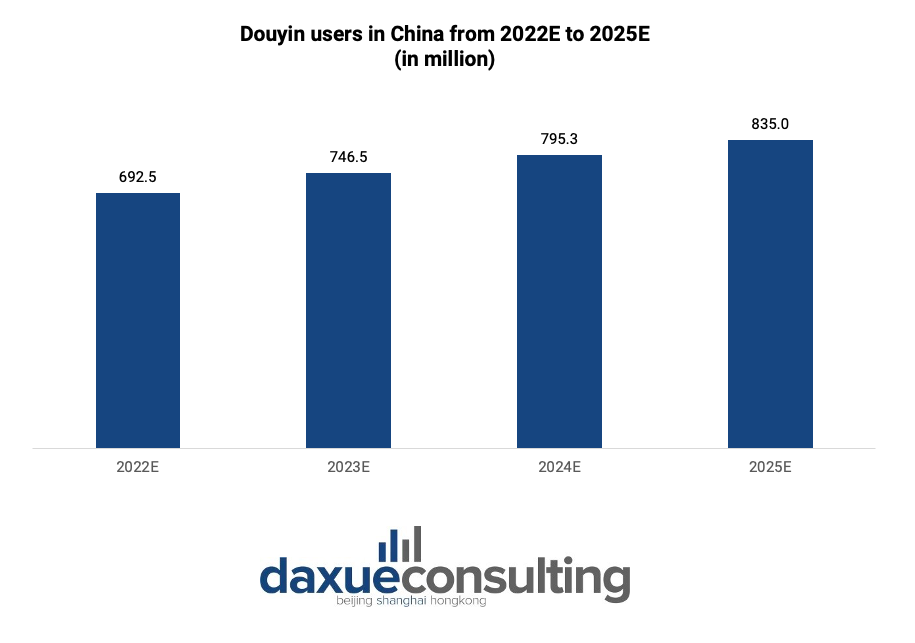
In 2018, ByteDance introduced e-commerce functionality to Douyin, and since then, this segment has witnessed remarkable growth. By 2021, Douyin’s e-commerce’s Gross Merchandise Volume (GMV) reached 800 billion RMB and in June 2022, the number more than tripled, reaching a 320% increase. Among the top 500 best-selling products on Douyin, the Food & Beverage (F&B) and Beauty & Skincare categories reign supreme, accounting for an impressive 48% of the total GMV. This rapid expansion, coupled with its massive user base, positioned Douyin as a major contender in the e-commerce landscape.

Douyin marketing: Boosting conversion and brand favorability
Douyin users actively consume material and entertainment for 120 minutes each day on average, which is twice the duration of other social media platforms’ users such as WeChat, Little Red Book, and Weibo. Additionally, Douyin users have shown a remarkable responsiveness to advertising, making it an ideal platform for brand promotion. Approximately 43% of consumers find Douyin advertising easy to accept and even enjoyable to watch. This positive reception to ads not only enhances brand perception but also increases the likelihood of conversion.
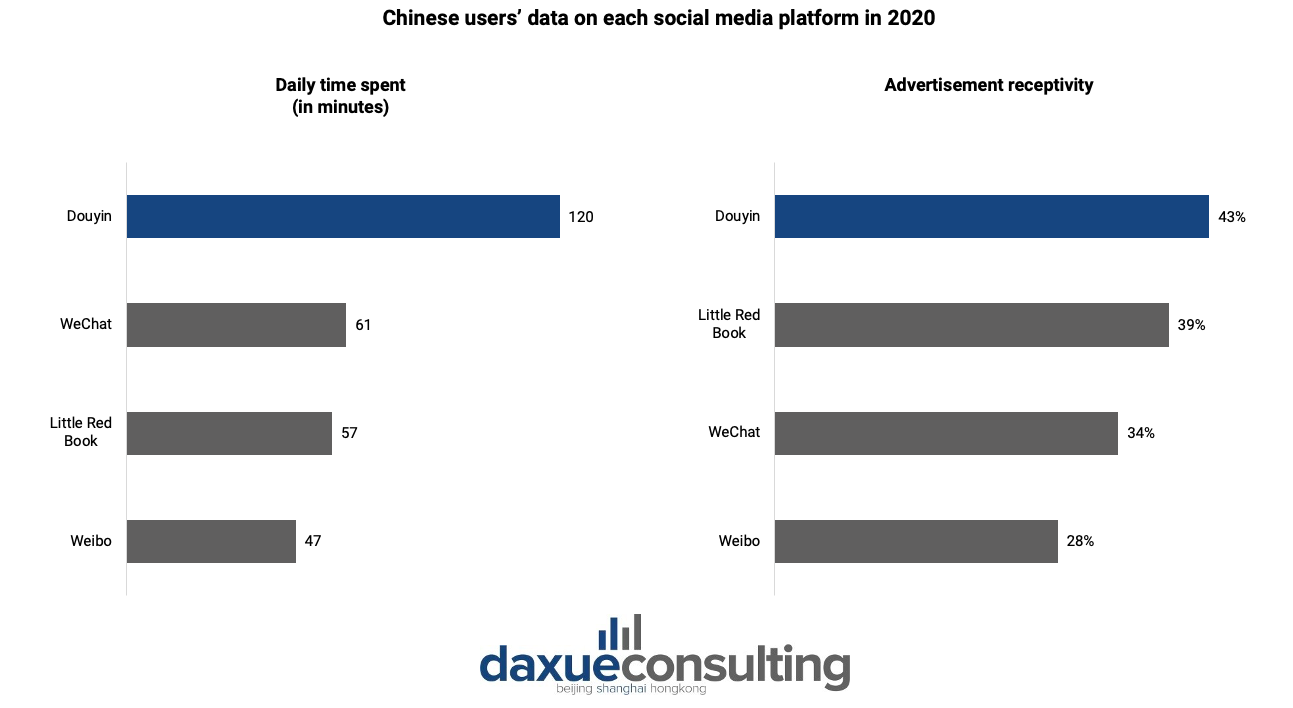
Navigating through Douyin ad formats
Based on its format, Douyin advertising can be separated into 4 groups, each catering to different marketing objectives:
In-feed ads
This is the most common ads format and appears in users’ For You feed as they scroll through videos. It also has a call to action that directs viewers to a landing page, such as Douyin business account or a product/live-streaming page. In-feed ads are a cost-effective option for lead generation, e-commerce conversion, driving traffic to livestreams, and other performance-oriented campaigns.
Native ads
Also known as Dou+, this type of ads is similar to Facebook’s “boosted posts” which has the purpose of magnifying already-existing content on Douyin.
Search ads
By establishing precise keywords associated with their industry, search advertising enables firms to target potential customers. The ads show up when users look for relevant terms, bringing in qualified traffic and converting people who are interested in particular brands, products, or services. Despite being slightly more expensive than in-feed ads, they are utilized by international brands like Dior, Gucci, and Sephora to increase traffic to their official websites or encourage app downloads.
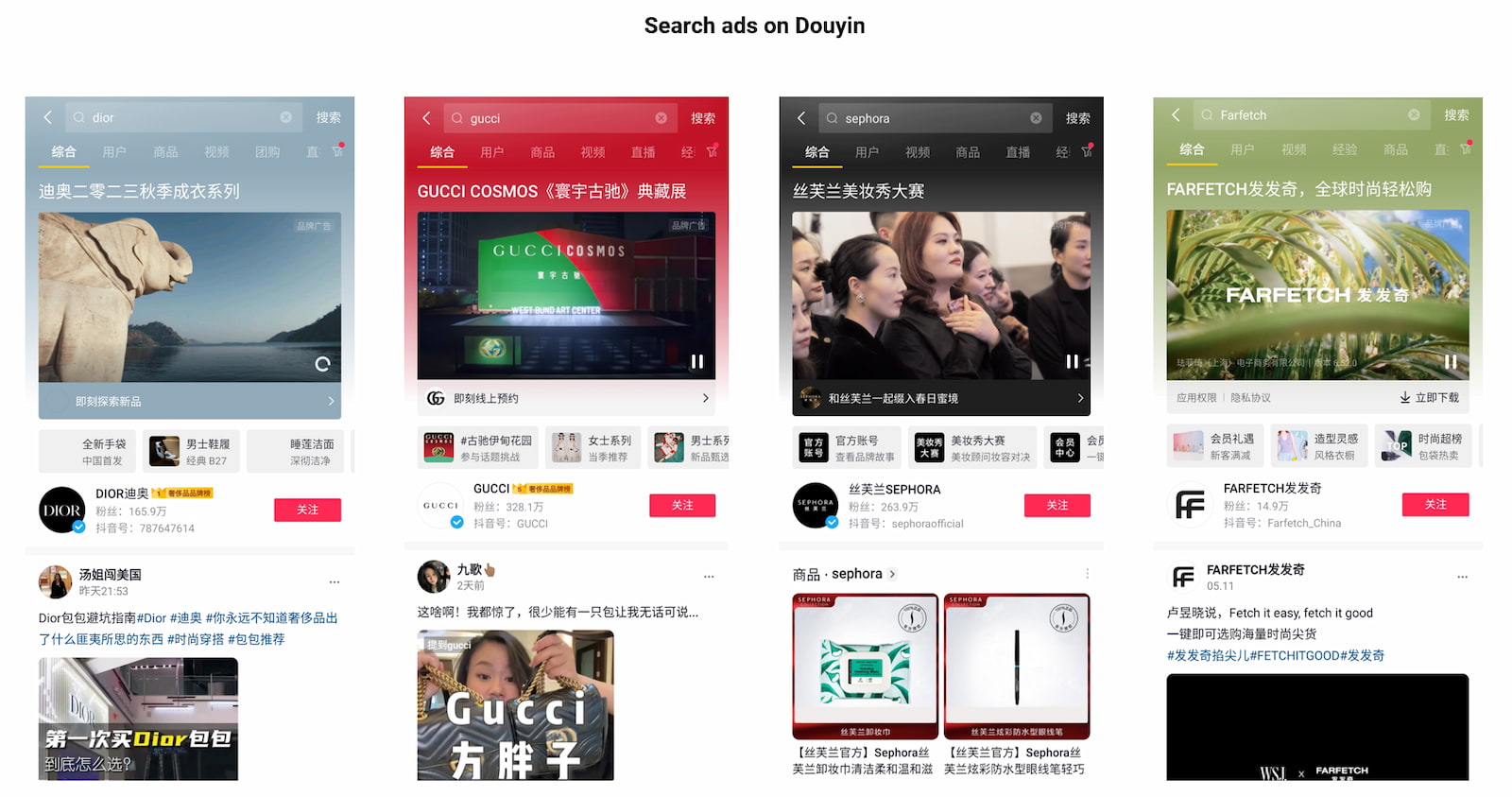
Top view/brand takeover
Top view/brand takeover ads on Douyin are immersive and impactful full-screen advertisements that capture users’ attention as soon as they open the app. These visually engaging ads provide brands with a valuable opportunity to create a strong initial brand impression. The form ads could be made up of static images, GIFs, or videos. When clicked, these adds can direct the users to landing pages or live streams. These ads are primarily created for those that are looking to increase brand awareness instead of e-commerce conversions as the users are no led to a particular product.
Douyin marketing insights: Maximizing engagement with KOLs and KOCs
Brands are actively leveraging Key Opinion Leaders (KOLs) on Douyin to target Gen Z consumers and maximize their reach. KOLs have the ability to make brand advertising go viral and attract a large user base. However, there are certain considerations that brands must keep in mind when working with KOLs in China.
For instance, it is crucial to choose KOLs that consistently produce high-quality content that resonates with the brand’s target audience. Aligning with the interests and values of the KOLs is also important. Brands should trust KOLs and allow them to maintain their authenticity, while still providing input and collaborating on content creation.
In addition to KOLs, micro-influencers known as Key Opinion Consumers (KOCs) also play a significant role in Douyin marketing. Douyin is filled with micro-influencers, and leveraging KOC marketing offers advantages: these influencers come across as more genuine and are more likely to display brand loyalty. Douyin’s advanced algorithms cater to specific user interests, allowing KOC content to reach niche groups and engage with like-minded consumers.
There are two strategies of live-streaming on Douyin: leveraging KOLs/ to promote products or hosting live-streaming sessions on the brand’s official account. The utilization of KOLs/KOCs is particularly suitable for brands in their early stages, as it allows them to benefit from the influencers’ reach and audience. However, the influential reach and audience of KOLs/KOCs can also benefit established brands by enhancing their visibility, credibility, and engagement.
Connecting brands to Chinese consumers through Douyin:
- Douyin is a valuable tool for marketing in China as they country has an estimated of 835 million users by 2025, an average of 120 minutes per day on the platform, and relatively high responsivity to advertising.
- Douyin’s e-commerce GMV has grown rapidly, with a yearly rate of 430%. F&B and Beauty & Skincare categories dominate the top-selling products on Douyin, accounting for 48% of the total GMV.
- Douyin advertising formats include in-feed ads, native ads, search ads, and top view/brand takeover, each serving different marketing objectives.
- Brands can leverage KOLs and KOCs to target Gen Z consumers, emphasizing high-quality content, authenticity, and alignment with audience interests and values.
Learn more about young Chinese consumer trends
